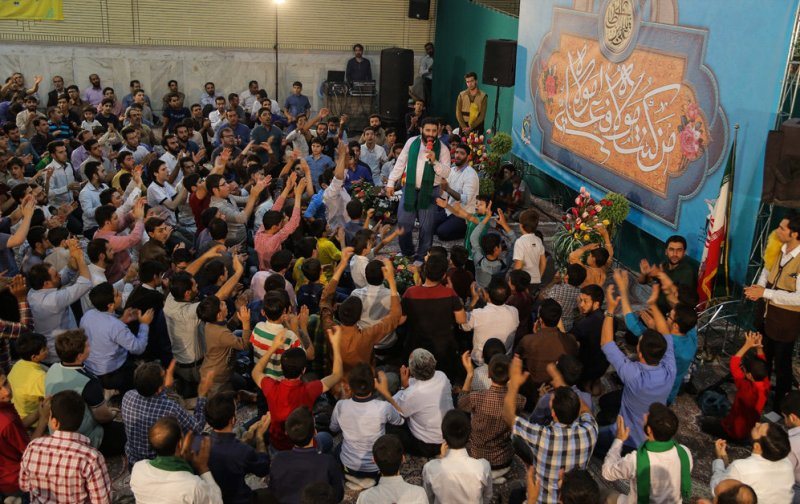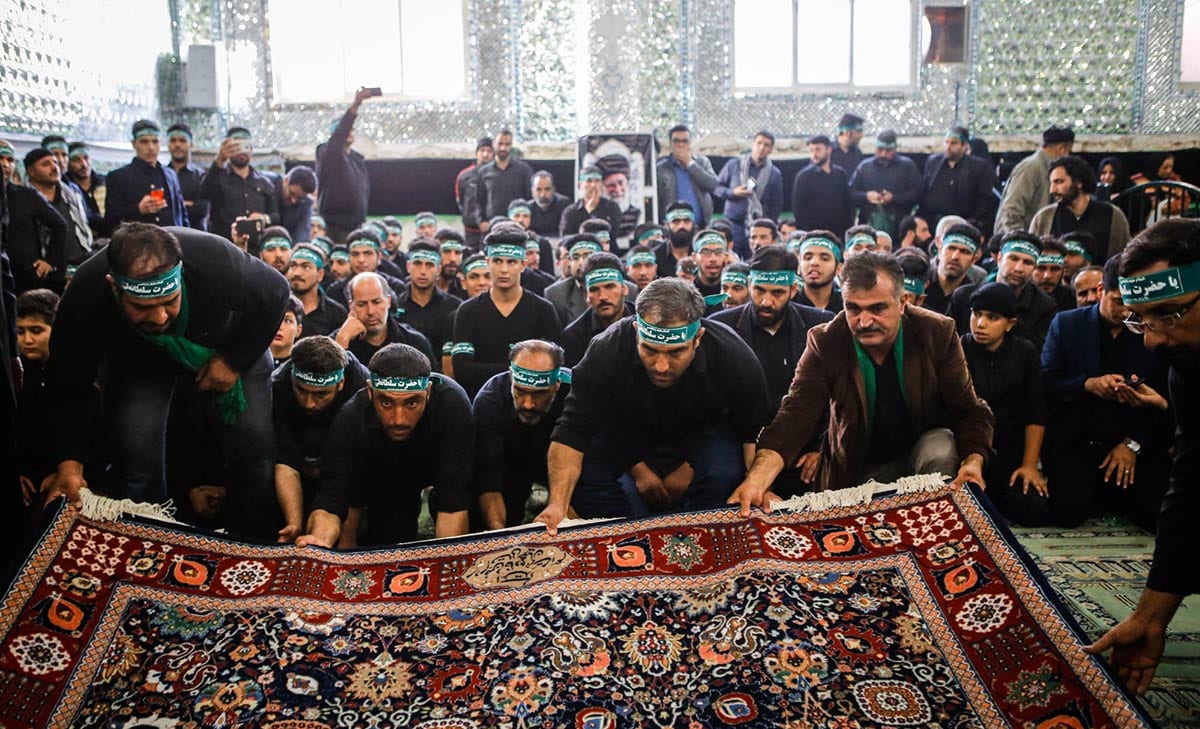Eid-e-Ghadeer

Ghadir Khom, the regional name in Saudi Arabia, was on the way to Mecca in Medina, where the Prophet Muhammad (PBUH), at the return of his last Hajj journey in March 632 (18th Dhu al-Hijjah), gathered all the Muslims who were with him in that place and declared "to whomsoever I am Mawla, Ali is also their Mawla." There is a difference between Shia and Sunni in the interpretation of Ghadir Khom hadith.
The Shia believe that the Prophet named Ali Ibn Abi Talib as his brother, his successor on behalf of Allah Almighty on that day, although the Sunni narrators only interpreted this hadith as the proximity of the Prophet to Ali and his friendship with him and his request that Ali, as his cousin and stepson, is his successor in his family responsibilities after death.
Thus, the appointment anniversary of Imam Ali (AS) to the succession of the Prophet of Islam and the transfer of government to him is well known to be Eid Ghadir Khum in Muslim beliefs, and this day has been registered not only as a historical day but also as one of the Islamic, religious and official holidays in Iran.
Tasu'a & Ashura


The month of Muharram is the first Islamic month of the Islamic calender, one of the forbidden months of Muslims, in which the greatest tragedy and oppression in the Prophet's family occurred in the history of the Muslim world.
Ashura is one of the events attracted the most attention of Muslims throughout the history, that in addition to its extensive role and profound social and historical impact, it has become a special cultural event now.
The popularity of this day among Muslims is driven from the event of Ashura in the 61 AH, in view of the fact that the major events of Karbala occurred on the ninth and tenth day of the month of Muharram al-Haram; these two days became more prominent, with the names of Tasu'a ("Ta'sa" in Arabic means "Nine" and "Tasu'a" means "Ninth day"), and Ashura ("Ash" means 10th and Ashura, meaning 10th day).
During these days, Imam Hussein (AS), the third Imam of the Shias and seventy-two persons of his followers were martyred with a thirsty lip in the war with a the forces of Yazid in the event of Karbala.
This mourning is not a normal one, and is the greatest mourning happening in this month.
The official holiday of Tasu'a and Ashura is two days in Iranian calendar.
This general mourning begins by wearing the black clothes and blackening the streets, mosques, Husayniyah, etc., by mourning's flags.
After the Ashura, the mourning continues at different times even until the Safar month.
Ritual Dramatic Art of Ta’ziye
.jpg)
Ta’ziye literally means mourning, however, what is evoked for Iranians by hearing the name of Ta’ziye is a special religious and ritual drama in which those who are familiar with the drama techniques perform some theatre for the sake of Moharram and the pains of the third Shia Imam, his family and friends in the region of Karbala and during their battle with Yazid. Since reading artistically the poems is more important than the method of performing the events, it has been named “Ta’ziye Khani” in comparison with “Rodha Khani”.
It usually begins with performing Pish-khani (reading a kind of introduction) of the main part. The person who establish Ta’ziye is named “Bani” (builder), one who directs it called “Ta’ziye Gardn” (runner) and its acters are “Ta’ziye Khan” (reader) OR “Shabih Khan”. The origin of Ta’ziye is not clearly determined, however, some believe that the roots of this ritual dates back to pre-Islamic Period in Iran and especially to the 3000-year-old ritual of Soog-e Siavash, the Iranian hero, which is considered to be the basis of Ta’ziye.
The formal form of 3000-year-old ritual in Iran, however, is attributed to the Shia Dynasty of Buyids; in 352 AH, Moez al-Dole ordered people to shut down the Bazaar, wear black cloths and read Rodha. Therefore, the foundation of Shabih Khani performance was established in that period. After that, under the rule of Shia Safavid government Ta’ziye was highly flourished. However, it is stated that the golden age of Ta’ziye in Iran is Qajar period during the reign of Naser al-Din Shah.
The establishment of Tekyeh Dowlat during his rule was supported as an imitation of Opera Hall Theatre in England. Ta’ziye Khani and Rodha Khani were forbidden by the government of Pahlavi I and they ruined Tekyeh Dowlat. Today Iranians perform Ta’ziye Khani every year in all cities from north to south such as Natanz, Shahrood, Isfahan, Markazi, Qom, Tehran, Kerman, Khuzestan, Fars, Bushehr etc. in addition, Ta’ziye is considered to be a kind of ritual drama attracted the great theater historians and theorists’ attentions around the world. Ta’ziye was inscribed on UNESCO List of Intangible Cultural Heritage of Humanity in 2010.
Qalishuyan (Carpet Washing) Ritual in Mashhad-e Ardehal

There are some nearby villages in the west of Kashan City which is called Aredhal altogether. The center of these villages is Mashhad-e Ardehal that is also known as Mashhad-e Qali (means carpet) by the locals. Being the martyrdom place of one of the Shia’ Imamzadehs is why this place is called Mashhad which literary means the place of Shahadat (martyrdom).
The ceremony of Qalishuyan is one of the ritual ceremonies dating back to approximately one thousand years ago in Mashhad-e Ardehal village. This ritual has been inscribed on the UNESCO Cultural and Spiritual Heritage List. Being also known as “Jomeh Qali” (literary means a Friday which is devoted to carpet), Qalishuyan ritual is in fact a symbolic show of the martyrdom happening, funeral and burying Imamzadeh Soltan Ali which is held every year by Kashan and Khave Ardehal inhabitants. At the beginning of 2nd century A.H. Imam Mohammad Baqer, the fifth Imam of Shia’, sent his son, Ali, by public request, to Kashan and Fin, in order to promote Islam and guide people. But he was martyred by the contemporary rule of the region. The region of Aznaveh village which become then famous as Ghatlegah (literary means shamble, the place of killing) is one of the holly and spiritual places located in 4km to the holly shrine of him. After this happening, some of Fin people who were the inviters and enthusiastic of him carried his body in a carpet on their shoulders while fighting with infidels. And some others dispersed the enemies to open the way for the population who wanted to wash the bloody carpet in a stream and bath the body before burying. The ceremony is in fact the symbol of washing the blood of Ali ibn Mohammad Baqer.
Qalishuyan ritual is the only religious ceremony that is held by the headquarters based upon the solar calendar in Iran, in the 2nd Friday of the autumn, often between the second and the third weeks (the closest week to Mehr 17), between ninth and fifteenth days of Mehr. One week before holding the ceremony, in the first Friday of Mehr, which is known as Jaar Friday (Jaar means public call for an event), Kashan people are invited to the ceremony. The inhabitants of Kashan, Khaveh village and other surrounding villages and cities, especially along the desert, are all gathered in this ceremony, they consider their presence in and watching Qalishuyan ritual to be one of the most important religious orders so that in their beliefs the reward of the pilgrimage to Soltan Ali Holly Shrine is equal to making a pilgrimage to Karbala and the presence in Imam Hossain Holly Shrine. Wearing a black cloth with a piece of wood in their hands, the participants are prepared for the ceremony in the Sahn of Amer ibn-Naser, one yard inside Soltan Ali holly shrine, and they are finally gathered in Safa Yard, in a certain manner, after going to and returning from Imamzadeh Hossain, one of Imam Zein ol-Abedin’s sons, located near to the holy shrine. At first, the trustees of Imamzadeh and Khaveh village hold the rituals of reading Rhode and mourning, they receive the rolled holly carpet from Khaveh inhabitants while taking it through Safa porch to the Safa Yard. They take the carpet to the monument of Imamzadeh Hossain to wash it in a certain stream while shaking the wood and chanting the name “Hossain” that indicates a symbolic fight with killers. The carpet is again delivered to the trustees in Safa yard, after washing ceremony. The ceremony is finally finished in Finiha yard after turning several times around the yard while mourning. Interesting among the other events around Qalishuyan ritual is the establishment of a bazaar for one week to ten days in the neighborhood of Soltan Ali monument buying from which may bring blessing according to the beliefs of people. It also should be said that the tradition of washing carpet gives the ritual an Iranian-nationalistic aspect to the extent that some believe that holding this ceremony in Mehregan is tightly related to the story of Siavash and the worshiping ritual of Tishtar (the God of Rain) and requesting the rain. It is also possible this place to be one of the ancient temples of Tishtar before burying of Soltan Ali and it was turned into the current Islamic form after the appearance of Islam and the accordance of the happenings around Imamzadeh Ali.